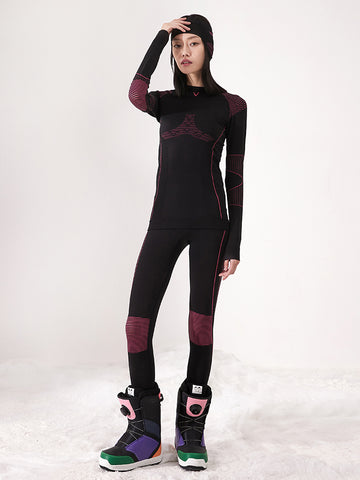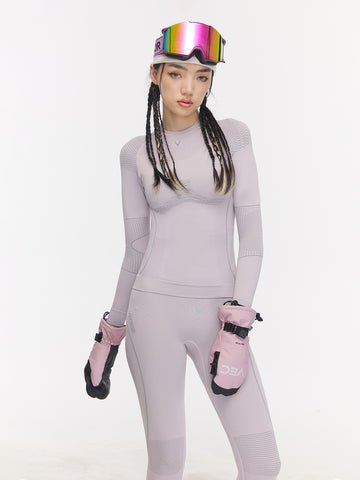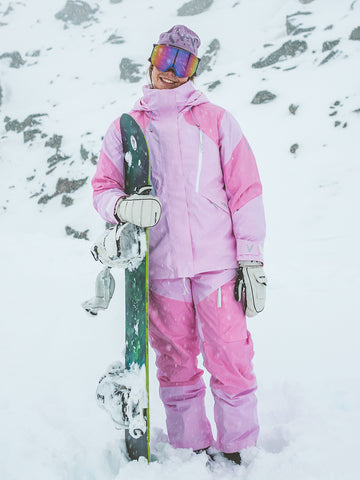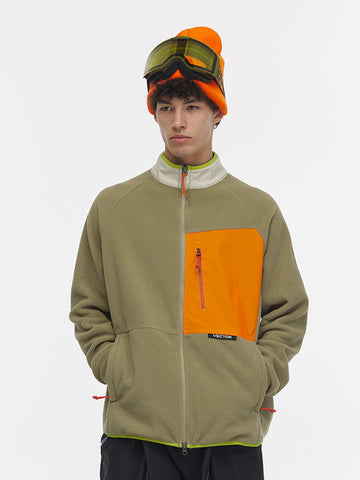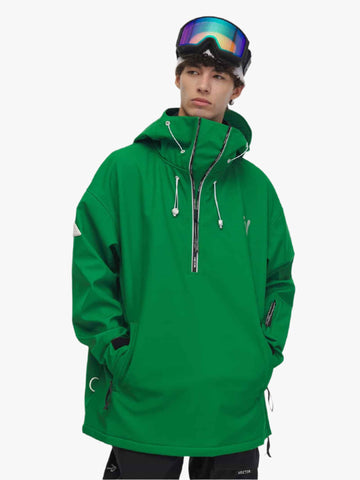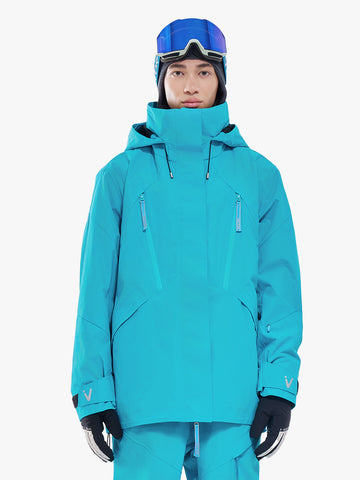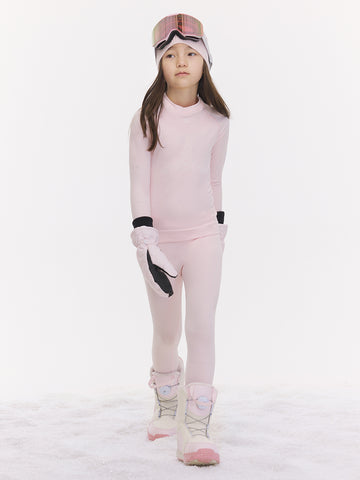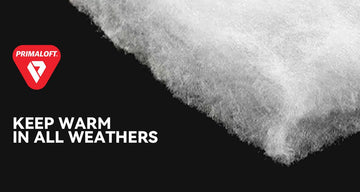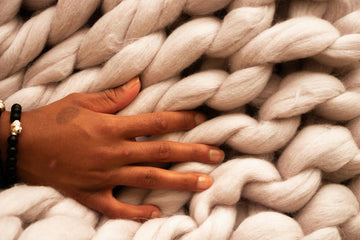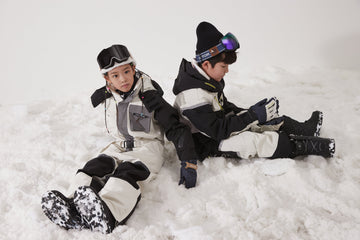Whether you're carving down fresh powder or planning your first snow trip, choosing the right outerwear can make or break your mountain experience. Maybe you're already searching for a durable snowboard jacket, or you're looking to complete your outfit with warm and waterproof women's snow pants. No matter your goal, investing in high quality skiing gear starts with understanding the difference between softshell and hardshell jackets. This guide will help you find out which type best suits your needs, style, and the weather you’re facing.
Content
What Is a Softshell Snow Jacket?
What Is a Hardshell Snow Jacket?
Key Differences: Softshell vs. Hardshell
Which One Should You Choose?
What Is a Softshell Snow Jacket?
A softshell snow jacket is a versatile outer layer designed for active winter sports like skiing, snowboarding, and snowshoeing. Unlike hardshell jackets that prioritize full waterproof protection, softshells offer a balance of breathability, flexibility, and lightweight comfort, making them ideal for cold but dry or moderately wet conditions.
-
Breathable and Flexible for High-Activity Use
Softshell jackets are made from stretch-woven fabrics (such as polyester or nylon blended with elastane), which provide excellent breathability and a full range of motion. This makes them ideal for high-output activities like snow touring, winter hiking, or backcountry snowboarding. The material allows sweat to escape easily, preventing overheating and keeping you dry from the inside out. Unlike hardshells, they’re also soft, quiet, and don’t restrict movement—perfect for long, active days on the mountain.
-
Light Weather Resistance, Not Full Protection
Most softshells feature a DWR (Durable Water Repellent) finish that helps shed light snow or drizzle. While they offer decent wind resistance and water repellency, they are not fully waterproof and will eventually soak through in heavy rain or wet snow. For this reason, softshells are best used in dry conditions, mild weather, or as a breathable mid-layer under a hardshell when the weather turns rough.
-
Comfortable and Great for Layering
Softshell jackets often come with fleece or brushed linings, adding light insulation without the bulk of a down or synthetic puffer. They’re designed to be layer-friendly—you can wear them over a base layer on warmer days, or under a hardshell for extra warmth and weather protection in colder conditions. Thanks to their soft materials and quiet feel, many people also wear softshells for everyday winter activities or travel.
A hardshell snow jacket is a technical outer layer built for maximum weather protection in extreme winter conditions. Unlike softshells, which prioritize comfort and breathability, hardshells are designed to be fully waterproof, windproof, and highly durable—making them essential for alpine sports, backcountry skiing, and mountaineering.
What Is a Hardshell Snow Jacket?
A hardshell snow jacket is a technical outer layer built for maximum weather protection in extreme winter conditions. Unlike softshells, which prioritize comfort and breathability, hardshells are engineered to be fully waterproof, windproof, and highly durable—making them essential for alpine sports, backcountry skiing, and any environment where staying dry and protected is critical.
-
Maximum Weather Protection
While hardshell jackets are not designed for insulation, they offer outstanding protection against wind, snow, and rain, making them an essential outer layer in harsh and unpredictable weather conditions. As a technical hardshell jacket, it's particularly suited for stormy days, strong winds, and environments where the weather can shift rapidly. For optimal comfort and temperature regulation, we recommend pairing it with VECTOR’s layering system—such as a moisture-wicking base layer and an insulating mid-layer—to adapt to various levels of activity. Although less breathable than softshells, VECTOR hardshells deliver reliable protection in key exposure zones, making them especially well-suited for skiers and outdoor athletes facing extended time in the elements.
-
Built for Durability and Performance
Designed for demanding environments, VECTOR hardshells are made from reinforced, abrasion-resistant outer fabrics and strategically reinforced at high-wear zones like shoulders, elbows, and cuffs. Functional details such as helmet-compatible hoods, underarm ventilation zippers, and adjustable cuffs and hems offer reliable performance in cold, rugged, and technical alpine conditions. These jackets feature a minimal insulation design to optimize versatility and allow for layering.
-
Adaptable, Protective, but Less Breathable
While VECTOR hardshell jackets are not designed for insulation, they excel at shielding you from external elements like wind, snow, and rain. For optimal comfort and performance, they should be paired with a VECTOR base layer and mid-layer system, which helps regulate body temperature across varying conditions. Though less breathable than softshells, VECTOR hardshells provide reliable protection in harsh and unpredictable environments, making them an essential outer layer when weather is a serious factor.
Key Differences: Softshell vs. Hardshell
When comparing softshell and hardshell jackets, the choice ultimately depends on your priorities—breathability and mobility, or full weather protection. Softshell jackets are lightweight, stretchy, and highly breathable, making them ideal for high-intensity activities like backcountry skiing, winter hiking, or casual cold-weather use. They’re often fleece-lined for added warmth, comfortable to wear all day, and quiet in motion. However, they only offer moderate wind and water resistance, which means they’re not suitable for heavy snow or wet conditions. Hardshell jackets, on the other hand, are built for harsh environments. They provide full waterproofing, windproofing, and abrasion resistance, making them essential for stormy resort days, mountaineering, or icy descents. Though stiffer and less breathable, they’re more durable and can be paired with mid-layers for warmth. Softshells work well as standalone layers in mild conditions or as breathable mid-layers under a shell. Hardshells are always the outermost layer in wet, extreme weather. In terms of cost and care, softshells are usually more affordable but harder to repair, while hardshells require more maintenance (like reproofing) but can last longer with proper care. At VECTOR, we design both softshells and hardshells to suit a wide range of needs—from urban-friendly performance pieces to alpine-ready technical outerwear—so you never have to choose between comfort and capability.
Which One Should You Choose?
If your focus is on high-exertion activities in dry, cold weather, like snow touring, snowshoeing, or winter hiking, a softshell jacket is your best pick. It offers breathability, stretch, and quiet comfort, with just enough warmth for active movement in light snow and moderate wind.
For wet, windy, or unpredictable conditions, such as resort skiing during storms, backcountry descents, or mountaineering, a hardshell jacket is essential. It provides full waterproofing, wind protection, and storm-ready features like helmet-compatible hoods and durable construction.
Many skiers choose a hybrid approach: wearing a softshell as their main layer and packing a hardshell for emergency weather. At VECTOR, we build both softshells and hardshells to meet the needs of real skiers—whether you're climbing uphill or riding through heavy snowfall.

FAQ
Q: Which type is more breathable?
A: Softshells offer significantly better breathability, making them the better choice for high-exertion activities like snow touring or snowshoeing. Hardshells are less breathable but provide more protection.
Q: Can I use both jackets together?
A: Yes! Many outdoor athletes wear a softshell as their main layer, and carry a lightweight hardshell for sudden weather changes. It’s a popular and practical combination.
Q: How do I decide which one to buy first?
A: If you’re on a budget and ski in mostly dry conditions, start with a softshell. If you often face rain, wet snow, or cold storms, invest in a hardshell first.
REFERENCE
https://www.rei.com/learn/expert-advice/soft-shell-vs-hard-shell.html
https://www.outdoorgearlab.com/topics/clothing-mens/best-softshell-jacket-men/buying-advice https://www.backpacker.com/gear-reviews/softshell-vs-hardshell/
https://gearjunkie.com/apparel/best-hardshell-jackets
https://sectionhiker.com/what-is-the-difference-between-a-hard-shell-jacket-and-a-softshell-jacket/



